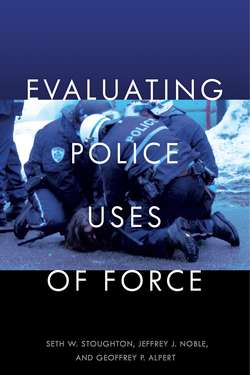Читать книгу Evaluating Police Uses of Force - Seth W. Stoughton - Страница 32
На сайте Литреса книга снята с продажи.
The Nature of the Threat
ОглавлениеThe most common method for determining the nature of the threat is by looking at the type of behavior that the subject is engaged in, but reviewers are cautioned against mechanically applying this approach. The question in any given case is not whether the officer’s use of force was proportional to the suspect’s physical actions qua behavior. Instead, the focus should be on whether the officer’s use of force was proportional to the threat that the suspect’s actions presented to the governmental interests identified in the first part of the analysis: facilitating the criminal justice process, maintaining public order, and preserving officer and civilian safety. The subject’s behavior is pertinent, of course, but must be considered in light of the greater context of the interaction; focusing exclusively on the nature of the subject’s behavior can lead to nonsensical results.
To see why, consider “active resistance.” Mentioned specifically in Graham, active resistance is a widely used phrase within policing74 that typically refers to nonaggressive physical actions taken by an individual to delay, defeat, or evade an officer’s attempts to take them into custody, physical movements or actions (as distinct from inactions) that are unlikely to harm the officer or others.75 An arrestee who pulls away from officers and begins to flee has taken two separate actions that both constitute active resistance (pulling away and running).
Unfortunately, however, that taxonomic approach does not provide a reliable foundation for constitutional analysis; focusing on the nature of the subject’s behavior conflates a suspect’s physical movements with a particular threat to a governmental interest. Rigidly applying this approach, for example, would suggest that active resistance threatens the government’s interest in facilitating the criminal justice process, but not the government’s interest in officer or public safety. Neither of those things is necessarily true. A hyper-obese octogenarian holding an oxygen tank may pull away from officers and begin to flee, and while their actions certainly constitute active resistance, the subject may well offer no actual threat to the government’s interest in apprehension. Similarly, while a subject who pulls away from an officer and begins to flee after shoplifting a pack of gum threatens only the governmental interest in apprehension, a confirmed serial killer who engaged in the same behavior also presents a threat to public safety.
In short, the nature of the threat to a governmental interest cannot be reliably assessed by looking exclusively at the resistive behavior in which the subject is engaged. Additional context is necessary.
